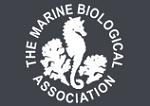APHOTOMARINE
An educational resource dedicated mainly to the photography
and diversity of marine life that can be found in coastal waters
and intertidal areas of Great Britain and Ireland by David Fenwick.

Didemnum vexillum
- underwater / close-up 1
The image above is a 'Public Domain' image from Wikipedia, originally from from the U.S. Geological Survey, photo by Dann Blackwood (USGS).
Images description - Tunicate colony of Didemnum vexillum. Large openings are cloacal apertures; brown material in them is interpreted to be fecal matter in cavities below the apertures. Sandwich town beach (41 deg 46.11 min N lat, 70 deg 28.95 min W lon). Water depth 4 m. November 7, 2006.
The image has been cropped to fit the page and has been added to display this invasive tunicate so that it may be recognized and compared with other tunicates on APHOTOMARINE, and until UK images are found or taken.
APHOTOMARINE supports open source data recording and sharing for the benefit of wildlife, recorders, research, science and education. The project recommends the following websites and works with the following bodies and organisations.
The Marine Biological Association or MBA, based in Plymouth, is one of the world’s longest-running societies dedicated to promoting research into our oceans and the life they support. Since 1884 the MBA has been providing a unified, clear, independent voice on behalf of the marine biological community.It has a growing membership in over 40 countries.
The National Biodiversity Network or NBN is a charity that supports open source data sharing and recording supporting conservation, science and education. "Why do recorders need open source?". Simply because it supports the core values of wildlife recording and the free use of records and data over a very wide network that includes partners like the Natural History Museum.
The taxonomy used here is based on that of the following database, which is also used by the MBA, NHM and the NBN.
The World Register of Marine Species or WoRMS.

